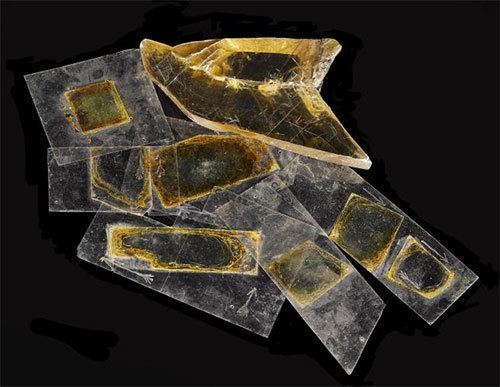 | ||
Herapathite, or iodoquinine sulfate, is a chemical compound whose crystals are dichroic and thus can be used for polarizing light. The composition of herapathite has been shown by the Danish chemist Sophus Mads Jørgensen in 1877 and others to be 4CH2·3SO4·2I3·6H2O, where C denotes the quinine molecule C20H24N2O2. The crystal can give up at least some of its water without losing its form and optical properties.
According to Edwin H. Land, it was discovered in 1852 by William Bird Herapath, a Bristol surgeon and chemist. One of his pupils found that adding iodine to the urine of a dog that had been fed quinine produced unusual green crystals. Herapath noticed while studying the crystals under a microscope that they appeared to polarize light.
In the 1930s, Prof. Ferdinand Bernauer invented a process to grow single herapathite crystals large enough to be sandwiched between two sheets of glass to create a polarizing filter; these were sold under the Bernotar name by Carl Zeiss. Herapathite can be formed by precipitation by dissolving quinine sulphate in acetic acid and adding iodine tincture.
Herapathite's dichroic properties came to the attention of Sir David Brewster, and were later used by Land in 1929 to construct the first type of Polaroid sheet polarizer. He did this by embedding herapathite crystals in a polymer instead of growing a single large crystal.
